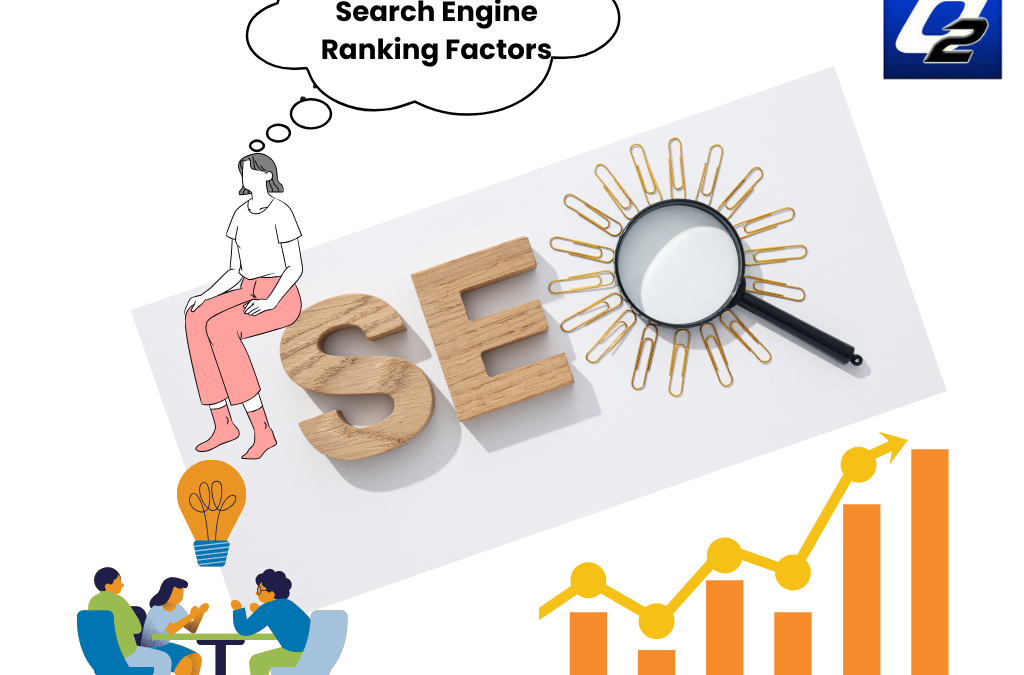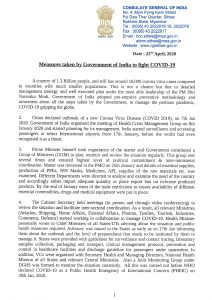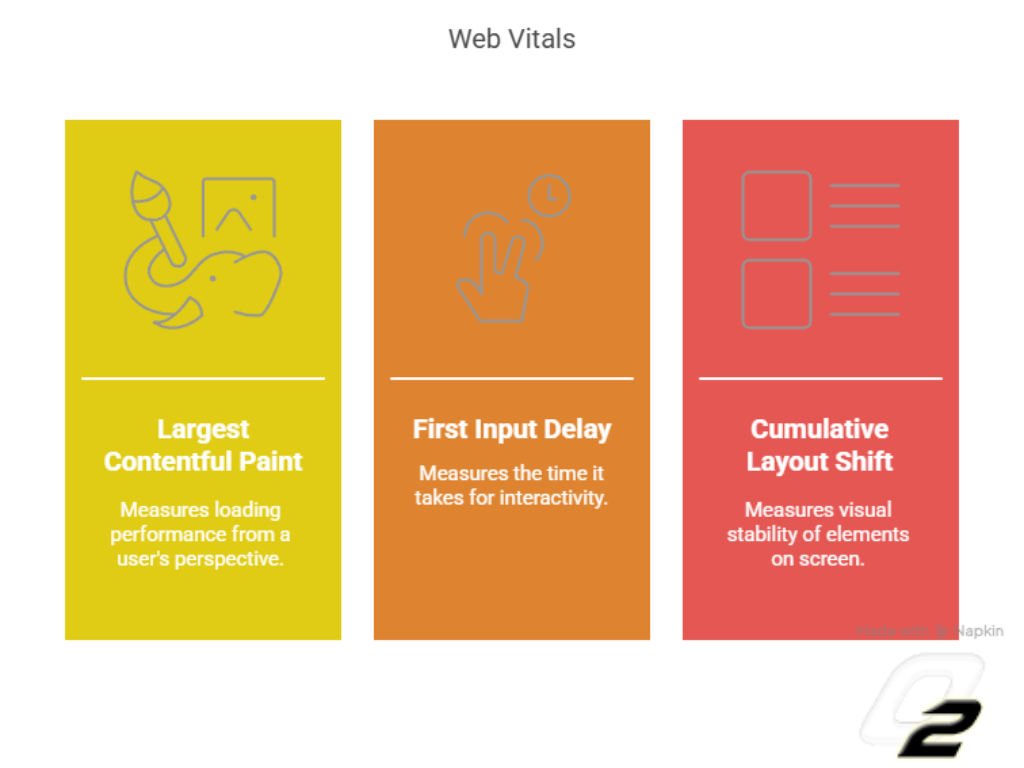Acknowledging the key ranking factors that search engines use to index content and how to improve your site’s online performance.
Introduction
Search engine ranking factor helps Google or other search engines determine which websites should be listed top when someone searches for something. The internet has a lot of information, and search engines work hard to find the most helpful answers quickly.
To do this, they look at every page and check for signs that it is good, like easy-to-read content, fast loading speed, working well on phones, and links from other trusted websites. These signs are called ranking factors.

This comprehensive guide delves into the essential ranking factors shaping SEO in 2025, providing actionable insights to optimize your online presence effectively. To better understand this, imagine you’re asking a librarian to help you find the best book about “plant care for beginners.”
The librarian doesn’t randomly pick a book. They look for one that’s well-written, easy to understand, frequently borrowed, and recommended by other gardening experts.
Similarly, when you type the same question into Google, it checks thousands of websites. It picks those that have fresh, detailed, and reliable content, load quickly, look good on mobile, and are linked to by other trusted gardening websites.
If your website is like a helpful, neatly organized, and frequently recommended book in a library, search engines will likely show it to users first. That’s why improving your content, making your website user-friendly, and building a trustworthy online reputation are all important steps in climbing the search rankings.
1. Quality of Content and Applicability
The quality and applicability of content are very important. It is the key factor for any search engine and is considered the first foundation. Google( search engines ) emphasizes the quality of content that delivers value to users and addresses their queries comprehensively and accurately.
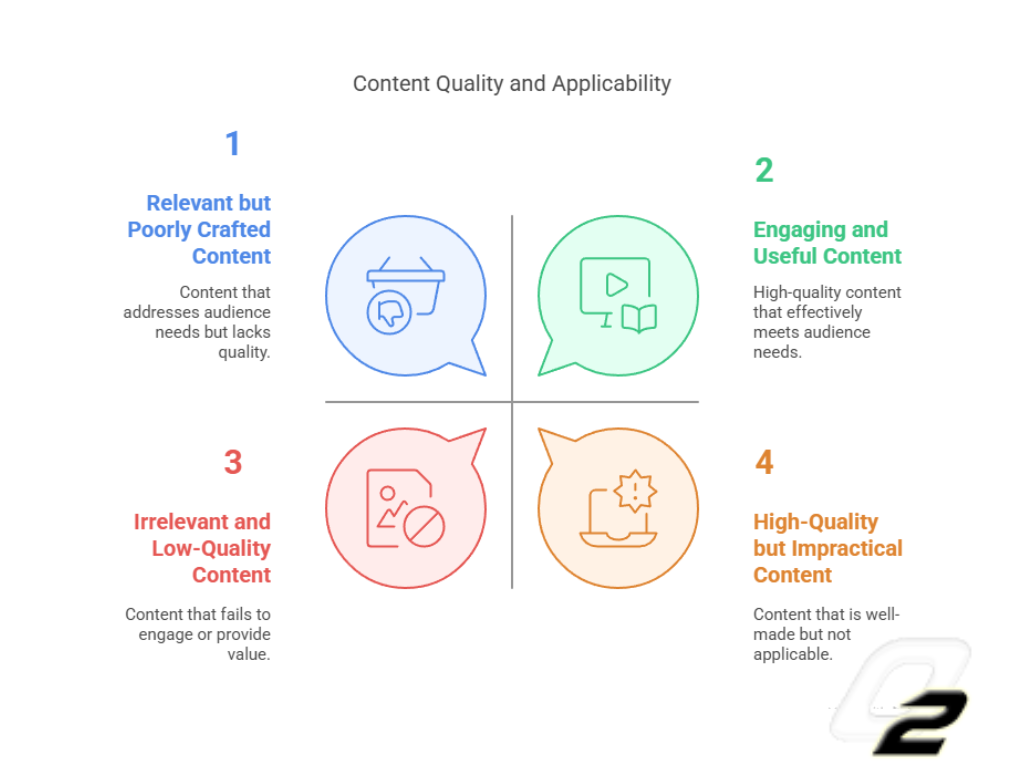
Best methods :
- Complete coverage: Ensure your content fully covers the concept, providing potential questions for users.
- Originality: Create unique content that offers fresh perspectives or information not readily available elsewhere.
- User Engagement: Incorporate engaging elements like images, videos, and interactive features to enhance user experience.
Example: A detailed guide on “Sustainable Living Practices” that includes practical tips, case studies, and expert interviews will likely rank higher than a generic overview lacking depth.
2. E-E-A-T: Experience, Expertise,
Authoritativeness, and Trustworthiness
Let’s break this topic down in a very easy way.
Imagine Google is like a really smart librarian trying to determine if a book is reliable or worth reading for related information.
When it comes to topics related to your health or your money (things they call “Your Money or Your Life” or YMYL), Google makes extra sure the information is top-notch.
That’s where E-E-A-T comes in. It’s like a checklist Google uses to see if the “book” (or website content) is trustworthy:
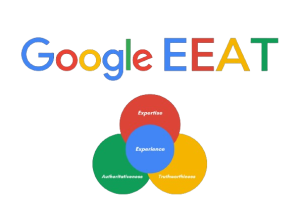
- Experience: The person who wrote this blog does actually know what they’re talking about or what they exactly wanted to deliver? Think of someone who is giving cooking advice, does he actually ever cook?
- Expertise: Does the person have special skills or knowledge in this area? Like a doctor talking about medicine or a mechanic explaining car repairs or SEO expert.
- Authoritativeness: Is this person or website considered a go-to source for this topic by other experts? Are they well-known and respected in their field?
- Trustworthiness: Does the website and the person who wrote it seem honest and reliable? Do they have clear contact information? Do they tell you how they handle your data (privacy policy)?
So, when Google looks at a website, especially about health or money, it pays close attention to these four things.
The sentence then gives an example:
“A financial advice blog authored by certified financial planners, citing authoritative sources like government publications, will establish higher trustworthiness.”
Think of it this way:
- Certified financial planners show expertise (they have the qualifications).
- Citing authoritative sources like government publications shows they’ve done their homework and are backing up their advice with reliable information, which builds trustworthiness and authoritativeness.
Because of these things, Google is more likely to see this blog as a reliable source of financial advice compared to a blog written by someone with no financial background and no sources.
E-E-A-T helps Google ensure you’re getting advice on important topics from people who know their stuff and can be trusted.
3. Mobile-First Indexing
Imagine you’re a movie director. Now you have two versions of the set: a grand, elaborate stage designed for a wide movie screen, and a smaller, more streamlined set built for a smartphone screen.
Nowadays, most of your audience is watching the movie on their phones, so you decide to emphasize the first smartphone set. You’ll make sure that the set looks fantastic, is easy to navigate, and has all the important elements visible on the smaller screen.
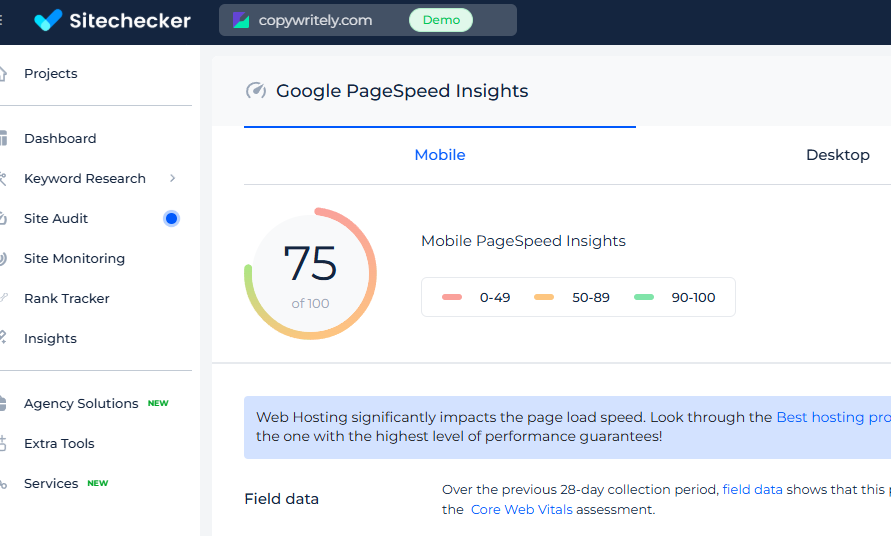
Even if your big stage set is amazing, if the smartphone set is disorganized or missing key features, your audience watching on their phones will have a poor experience or may not be interested in staying due to technical issues. And since most people are watching on phones, that matters most.
Optimization Tips in this new analogy:
- Responsive Design: Try to maintain a layout, size, and design that fits the big and small screens without losing key details.
- Speed Loading: If it takes too long for the scene to appear on their phone, they might get impatient and stop watching. Optimizing images and page which loads quickly on mobile can be click.
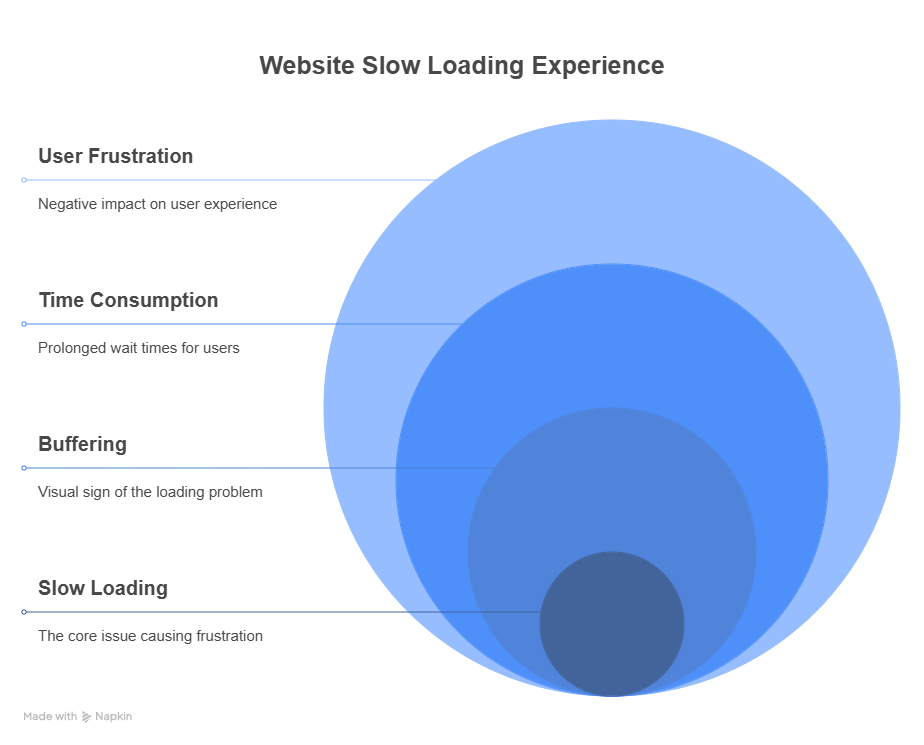
Let’s have an easy example:
Imagine you have an online clothing store. You have designed your website in such a way that user unable to open it or it is too much time to open and the images which you have added is not very clear or small in size, the click through button are also palced awkwardly, then the user quickly switch to another clothing store.
The above is an example of the same.
4. Page Experience and Core Web Vitals
Let’s assume you’re visiting a brand new amusement park. Your overall experience is how much you enjoy your entire visit, from the moment you enter until you leave.
In the same way when you entre a new page, google or some other search engine wants to know if people have a smooth and enjoyable time on your website.
Now, within this amusement park, there are a few key rides that Google pays extra attention to, calling them Core Web Vitals. These rides are like the most important parts of your website’s experience:
- Largest Contentful Paint (LCP):
- First Input Delay (FID):
- Cumulative Layout Shift (CLS): The “No Sudden Surprises Ride.”
So, Google looks at these three “rides” (Core Web Vitals)—how fast people can get in, how easy it is to play, and whether they feel stable while doing it—to get a good idea of your overall “amusement park” experience (Page Experience). If these rides are smooth and enjoyable, people will likely have a good time on your website.
5. Backlinks and Link Building
Okay, let’s talk about “Backlinks and Link Building” and why they’re a big deal for how high your website appears in Google search results. Think of it like this:
Imagine different websites are like people, and a backlink is like one person recommending another person.
If a really well-known and respected person (a high-authority website) recommends your website to others by linking to it, it’s like a strong vote of confidence. Google sees these recommendations as important signals that your website has valuable and trustworthy information.
Note: In the above image Brainvire is proveding backlink to oxygen company.
Here’s a simple breakdown:
- Backlink: When another website puts a link on their page that takes you to your website. They say, “Hey, this website has something interesting you should check out!”
- Link Building: The process of getting other websites to link back to yours. It’s like trying to get those respected people to recommend you.
Why are backlinks so important for Search Engine Ranking?
Think of it as Google trying to figure out which websites are the most popular and trustworthy sources of information on a particular topic. If many other credible websites are linking to yours, it’s like many people are saying, “This website knows what it’s talking about!”‘
This tells Google that your website is likely a good resource and deserves to rank higher in the search results.
NOTE: Getting backlinks from high-quality and relevant websites is like getting strong recommendations. Strong recommandation will have good impact on search engines.
6. Technical SEO and Site Architecture
A well-structured website facilitates better crawling and indexing by search engines.Let’s explain technical SEO and site architecture using a completely different image.
Imagine Google is like a delivery company trying to pick up and deliver packages (your web pages) to people all over the world.
Simple Example:
Think of a big news website. They publish many articles every day. If their website has a clear URL structure (like www.xyznews.com/sports/football/todays-match) and an updated sitemap that tells Google about each new article, it’s much easier for Google to find and index all their stories quickly so people can see them in search results.
In short, Technical SEO and site Architecture are very important for any website to provide users a proper guide to visit which category or the user is looking for, which subject he is interested in.

7. On-Page SEO Optimisation
Optimizing individual pages enhances their visibility in search results. On-page seo includes title tags, meta description, keywords and Header tags like (H1, H2, H3, and H4).
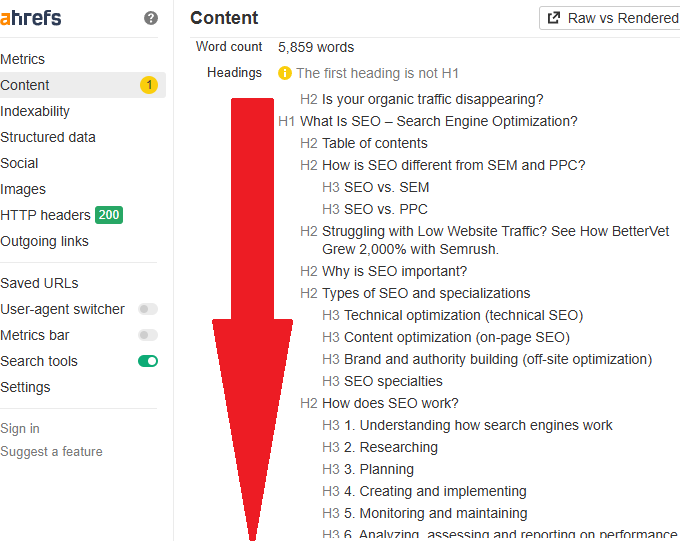
Think of a webpage like a helpful sign:
- Clear Heading: Tells you exactly what’s there.
- Short Description: Makes you want to read more.
- Organized Subheadings: Help you find what you need quickly.
8. User Engagement Signals
User behaviour metrics influence search rankings. CTR, Bounce rate and Dwell time this are some of the examples that i have tried, and the results are just great.
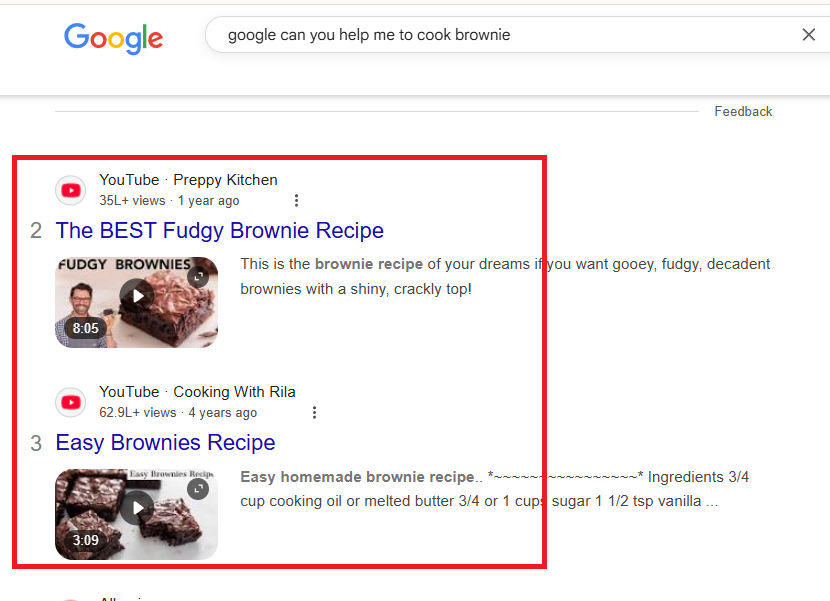
You can also use tutorial videos and images, which also help in the branding of your website.
9. Voice Search Optimization
Voice search optimization is now a days trending, most of the website have enable this feature in their website like voice search optimization and voice assistants.
Voice search offers hands-free convenience, especially while driving or cooking. It provides quick answers and streamlines information retrieval, making multitasking easier.
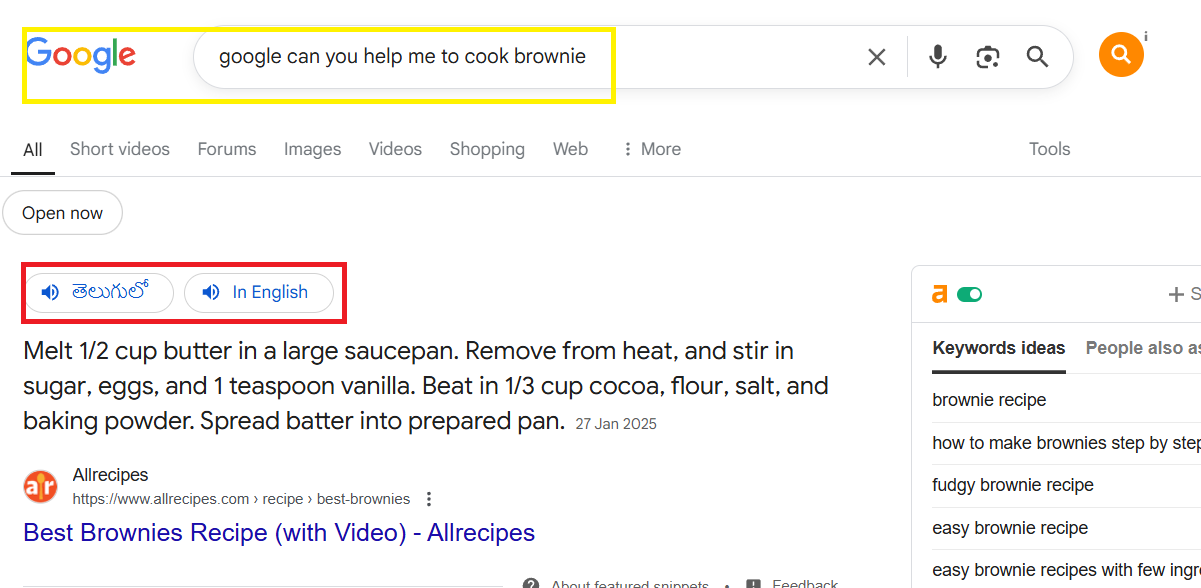
Many updated Divi theme provide this features, you can enable them.
Setting up voice search on your site is usually quick and requires just a few simple adjustments, and then it’s ready for voice commands!
Conclusion
A multidimensional strategy is needed to stay ahead of the curve in SEO, emphasizing user involvement, technological optimization, content quality, and flexibility in response to new trends.
You may improve your website’s visibility and attain long-term success in search engine rankings by placing the methods described in this tutorial into practice.
FAQ
FAQ 1: What is the most important ranking factor in SEO?
Content quality remains the most critical ranking factor. Search engine like (Google) sort fully infromative article, explained detailed, and provides relevant content that answers users’ queries.
FAQ 2: Should often we need to update my website content?
Updating website content in every 3 months is very important as it helps the users to update with latest or updated information. It also helps search engine to climb blog on top the searches and also improving your ranking in search. I personally recommand that updating the content is very important to stay top on search engines.
FAQ 3: Does optimizing for mobile affect search engine rankings?
It’s true that mobile optimization is essential. The mobile version of your website directly impacts rankings due to Google’s mobile-first indexing. Fast loading times, responsive designs, and easy-to-use navigation improve SEO performance and the mobile user experience.
FAQ 4: How do backlinks help in SEO?
Backlinks function like other websites’ endorsements. Search engines are alerted to the legitimacy of your material when reputable websites link to it. Quality backlinks improve your domain authority and can significantly enhance your visibility in search results.
FAQ 5: What is Google RankBrain, and why does it matter?
Google RankBrain is an AI system that helps process search queries. It evaluates how users interact with results, focusing on relevance and satisfaction. Optimizing for user intent and engagement ensures better alignment with RankBrain’s ranking logic.
